Homesteading is all about being self-sufficient. One of the first things many homesteaders want to do is start producing their own food. Many people feel like there’s not much they can do if they live in an apartment or if they don’t have much yard space. Believe it or not, you can still grow a lot of vegetables indoors.
-
Scallions (a.k.a. green onions)
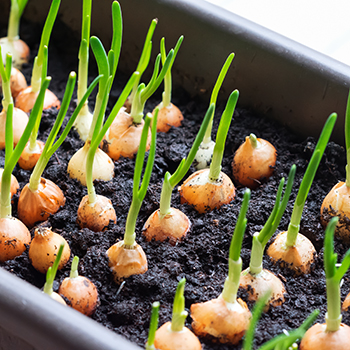
Scallions are the easiest type of food you can grow. All you have to do is make sure you buy the kind that still has a few tiny roots on the bottom. When you use them, cut the bottoms so that 1/4”-1/2” (6mm-13mm) is left above the root. Place them in a glass of water, leave it near a window, and make sure water is always covering the roots. Within a few weeks, they will have completely grown back. You can do this again and again.
Tip: Just cover the white portions in water, not the green section of the plant.
-
Leeks
You can re-grow leeks in the same way you grow scallions. Just make sure to cut 1/2”-1” (13mm-25mm) of the bottom of the leek with the root and leave it in a glass of water the same way as the scallions.
Tip: You can start your leeks at different times so you always have leeks ready to eat.
-
Microgreens (a.k.a. Sprouts)
All you need to make microgreens is a mason jar and seeds, though sprouting lids would be helpful. Soak the seeds overnight, then place the seeds in the jar. Rinse them twice a day for three to four days. Try to drain as much water as possible when you rinse them. The seeds should be damp, but not soaked. Your sprouts should be ready by the fourth through the sixth day. If your sprouts turn brown or gray, they have been left in the jar too long and are no longer good.
Tip: Read the instructions on your seed packet. Most of them will grow in water but there are a few varieties that need soil.
-
Salad Greens

Salad greens are a great vegetable to grow indoors. You can choose from spinach, kale, and/or arugula. They only need about eight hours of light and do well at 60°F (16°C). They also don’t take up a lot of space. Follow the directions on the package and within a month, you could have baby salad greens ready to eat! These will do well in small separate pots or planted in a row in a larger planter. Make sure you buy quality soil graded for edible plants. Some flower soils have pesticides that should not be consumed.
Tip: If they seem to be withering and dying, check to make sure they’re not too warm or getting too much sunlight.
-
Lettuce
Leaf lettuce can also be grown easily indoors in a similar way to other types of salad greens.
Tip: Make sure you choose leaf lettuce. Head lettuce takes up a lot more room.
-
Potatoes

If you have any potatoes in your kitchen that you have forgotten about and have started to sprout, you can easily grow potatoes in a 5-gallon bucket. Make sure it’s made out of food-grade plastic. Drill 10 holes in the bottom and buy a saucer big enough to catch the water that drains out of it at the bottom. Fill the bottom 4” (10.15cm) of the bucket with quality soil, and water until it’s moist.
Place two whole sprouting potatoes in the bucket with the spouts facing up and cover them with soil. Keep them well-watered. When the sprout reaches the top of the bucket, add enough soil to fill the bucket 3” (7.6cm) from the top. The potatoes are ready to harvest when the top portion of the plant turns yellow or brown.
Tip: Red potatoes, Yukon Gold, and Yellow Gold potatoes work best for this.
-
Sweet Potatoes
You can grow sweet potatoes in the same way as regular potatoes. Many people don’t have success because many sweet potatoes don’t sprout easily. For some reason, local organic sweet potatoes work best for sprouting.
Tip: You can also cut the sweet potato in half and suspend it in a glass of water using toothpicks to get it to sprout.
-
Tomatoes

While some varieties of tomatoes are too large for growing indoors, there are plenty of tomatoes that can be grown inside. Indeterminate tomatoes get too big to feasibly grow them indoors, so you will have to choose a determinate variety. That means that any tomatoes you grow inside will produce tomatoes only once. They need 12-14 hours of full sun and temperatures of 70°F- 90°F (21°C-32°C). If you don’t have a lot of room, many dwarf varieties produce grape and cherry tomatoes and only grow 6”-9” (15.25cm-22.85cm) tall.
Tip: Baker’s Creek Heirloom Seeds has several dwarf varieties that grow very well indoors.
-
Radishes
Radishes are fast-growing vegetables that don’t need a lot of room. They should be planted where the soil is at least 6” (15.25cm) deep. Make sure you follow the package directions on how far apart they should be planted. You can eat the radishes as well as the greens. They are usually ready to harvest around 30-40 days after planting.
Tip: Radishes are similar to salad greens in their needs. They shouldn’t get too much light or be too hot, otherwise, they won’t grow well.
-
Carrots

The trick to growing carrots indoors is making sure that your container is deep enough for growing the type of carrot you want. They need temperatures of about 60°F (16°C) to grow well and need about 12 hours of light each day. Make sure you follow the directions on the seed packet so you know how deep of a container you will need.
Tip: Carrot seeds are very tiny, so it’s difficult to plant them spaced out according to the directions on the seed packet. Just plant them as well as you can. When they’re about 1”-2” (2.5cm-5cm) tall, separate them according to the directions on the package.
Additional Tips
You can grow many different types of vegetables indoors. Self-pollinating vegetables are the easiest to grow inside. Other than the ten vegetables listed above, self-pollinating vegetables include peppers (both bell peppers and hot peppers), all types of beans, peas, and eggplants. If you don’t have the amount of light necessary to grow what you want, there are some pretty reasonably-priced grow lights available to buy. You can even grow some vegetables that are pollinated by bees if you pollinate them yourself using cotton swabs. Essentially, the vegetables you can grow indoors are limited only by your imagination!
You may also like:
The Leaf People Should Place In Their Shoes (Video)
A Medicinal Garden Kit For Starting A Small Backyard Pharmacy
40 Uses For Sawdust Around Your Homestead
How to Dry Can Beans and Rice for 20+ Years Shelf Life
Is It Legal To Harvest Rainwater In Your State?
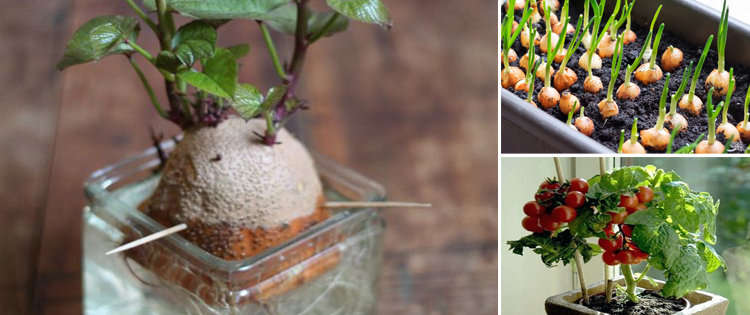
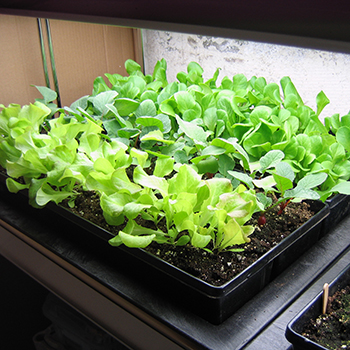
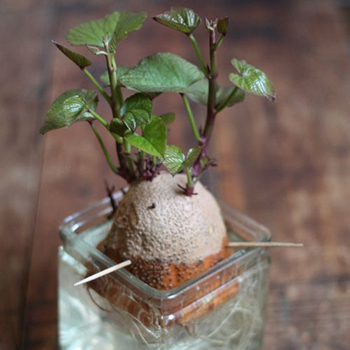
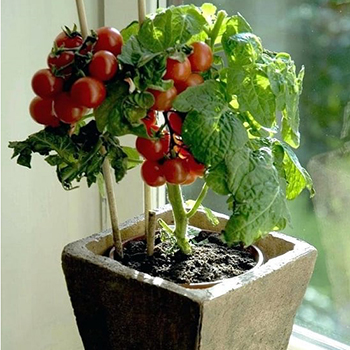
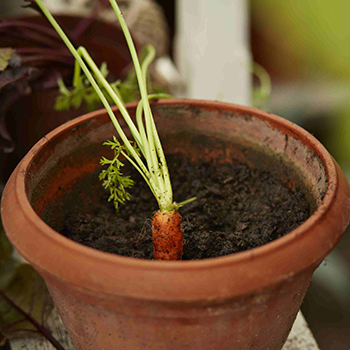









For salad greens, one of the easiest and robust ones I’ve found for growing in pots is malabar spinach. The green variety especially. It is a vining plant but you can keep clipped (and replant the stems cut). The whole plant is edible, loves the heat, and many times the leaves can get bigger than your hand. Tastes great in salads and is packed with vitamin A, magnesium, protein.